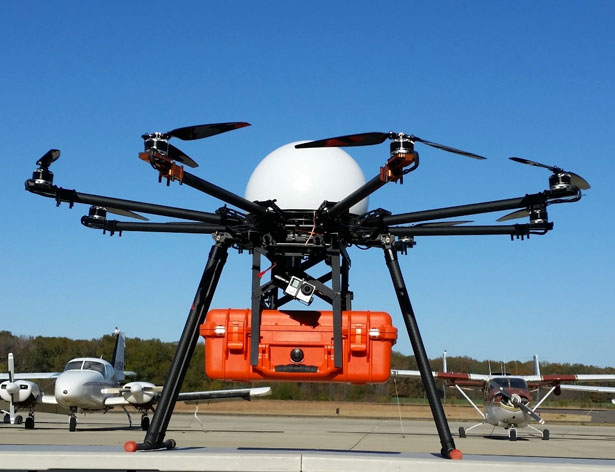It may look like something out of a sci-fi film, but it’s a new reality in medicine. Advanced technology developed in collaboration with the US Department of Homeland Security’s “Stop the Bleed” campaign uses a telemedical drone system with holographic capabilities to connect emergency physicians and lifesaving medical supplies with disaster victims.
Known as HiRO (Health Integrated Rescue Operations), the system was developed by Italo Subbarao, DO, senior associate dean at Hattiesburg, Mississippi’s William Carey University College of Osteopathic Medicine, and Guy Paul Cooper Jr., DO. The two were inspired after studying medical response efforts after an EF-4 tornado with maximum sustained winds reaching 170 miles per hour devastated the town in February 2013, causing more than $38.5 million in damage.
“Recent catastrophic events illustrate the challenges of getting life-saving treatment to disaster victims, particularly when first responders can’t get there quickly by ground,” said Dr. Subbarao, a disaster medicine expert and emergency medicine physician. “Our goal, as osteopathic physicians, is to bridge that delay by delivering rapid treatment directly to the victims, using remote physicians to instruct anyone on site.”
That goal is in line with Homeland Security’s Stop the Bleed, a national awareness campaign launched in October 2015 and aimed at cultivating grassroots efforts that encourage bystanders to become trained, equipped, and empowered to help in a bleeding emergency before professional help arrives.
“No matter how rapid the arrival of professional emergency responders, bystanders will always be first on the scene,” the campaign website reads, noting that massive blood loss can prove fatal within just five minutes. ” Those nearest to someone with life threatening injuries are best positioned to provide first care.”
To that end, each HiRO drone and telemedical kit includes:
- An augmented reality interface that operates on a Microsoft HoloLens headset, which gives a remote physician the ability to treat multiple victims. This system includes a pair of mart glasses, which a person at the scene wears, essentially becoming a remote physician’s eyes and ears on the scene.
- An automated medication bin that allows the remote physician to unlock specific compartments, giving bystanders safe access to medications and equipment supported by video guidance from the doctor.
- An integrated holographic electronic health record system display, which helps the remote physician monitor multiple patients in the field.
Drones can be outfitted with a variety of sensors, such as infrared, to help locate victims even in the most devastated areas.
“We focused on making sure our interface and medical kits are intuitive for both the remote physician and the person at the scene,” Dr. Cooper said. “Safety and simplicity are top priorities because we’re working to saves lives in very high stress situations.”
Today’s medical students – and tomorrow’s doctors – are afforded a vast array of technological advances that previous generations of caregivers could only dream of. We here at WOLFPACC support technological innovations that help doctors better reach and safely care for patients, and work tirelessly to give current and prospective med students the skills, confidence and competitive edge needed to succeed in an ever-changing field. Call 904-209-3140 to find out how we can help.




